Top of the Lake: Is New Zealand's greatest actor New Zealand itself?
- Published
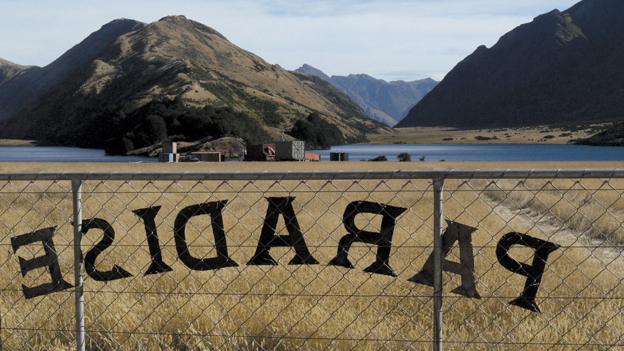
If a country could be eligible for a best actor award, New Zealand could be in the running for every gong going, with its contrasting moods showcased most recently in The Hobbit and Top of the Lake. Is the scenery more than just a dramatic backdrop?
"Sinister... the heart of a demon" - the Guardian, external
"Majestic menace" - Slate, external
"Bleak, forbidding or just plain murderous" - Daily Mail, external
"Unspoiled and unruly" - Variety, external
These are not reviews of an actor's performance in the BBC Two mystery Top of the Lake - well, not any of the human actors - but the part played by the landscape. "The geography is really another brooding character," says the Australian in its review, external, praising its "angularities, shadows and dark moods".
It's not the first time New Zealand's scenery has muscled its way into reviews and water-cooler conversations. The same happened with Peter Jackson's Tolkien trilogies - first Lord of the Rings and now The Hobbit - in which the country's dramatic terrain itself "plays the mythical world of Middle-earth" according to the New Zealand Tourism website, external.
Does that make the landscape a co-star? Yes, says Alfio Leotta, a lecturer in film studies at Victoria University of Wellington. He sees it playing an "active role" in films such as The Piano or Lord of the Rings.
"One of the main challenges faced by Frodo in his journey is the interaction with a natural environment that can be both friendly and hostile (depending on the circumstances)," says Leotta.

"The same can be said about The Piano, as the main obstacle to retrieve the piano is the thick bush. The opposition between civilised and primitive worlds is central to the narrative."
In The Piano, the beach represents the borderline between civilisation and wilderness, he says, an opposition dramatised by the famous image of the piano stranded on the sand.
The same scene, he points out, was used in the international advertising campaign "100% Pure New Zealand" as a symbol of the country's dual appeal to visitors - familiar and civilised, on the one hand, but also "an exotic, untamed paradise".
The piano on the beach becomes "an icon of New Zealand itself", he says.
Some directors have also used the landscape to transform characters who interact with it.
In Top of the Lake, troubled police detective Robin Griffin frequently retreats to a remote hut or to the lakeside itself - locations that unlock hidden emotions, but also extra drive and determination.
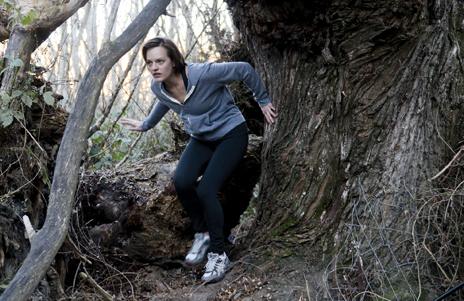
Elisabeth Moss as Detective Robin Griffin in Top of the Lake
"Think about Frodo's or Bilbo's transformation from ordinary hobbits into heroes," says Leotta.
"Or about Ada's transformation [in The Piano]. Thanks to her encounter with the indigenous land and people, she is able to get rid of Victorian conventions and repression and free her emotions and sexuality."
Leotta puts the "centrality of landscape" down to the fact that, for decades, New Zealand's film industry was short of studio infrastructure.
"New Zealand film-makers were forced to film on location. Location was everything, both an asset and a challenge. The way in which landscape is represented in Top of the Lake, The Piano and the Tolkien films has been influenced by this tradition of landscape representation."
Writer and director Stella Duffy - a Londoner raised in New Zealand - compares the sense of place in Top of the Lake to the strong presence of London in the novels of Dickens.
But she also says the Maori belief in the land as a living thing, shared by many New Zealanders, plays a role.
For Karl Burrows, of Maori performing arts group Manaia, the idea of the land as a character is far from unusual - it's very old.
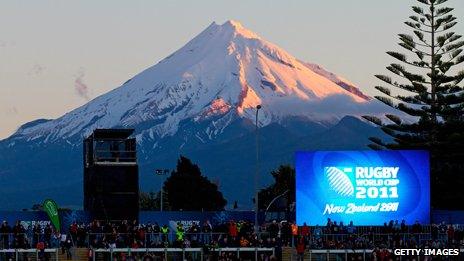
Maori legend has it that volcanoes such as Mt Taranaki once were warriors
Maori legend has it that humans are descended from Ranginui, external, the sky father, and Papatuanuku, external, the earth mother, while the volcanoes in the middle of the North Island, are cast as rival warriors fighting for the love of two maiden mountains.
"The mountains are our ancestors too," says Burrows. "They fought upon the land for love - and one, my mountain Taranaki, migrated west to maintain his tapu or sacredness. My people call our mountain koro Taranaki, which acknowledges him as our grandfather or elder, someone we respect."
The diversity of the landscape - mountains, rainforest, pastureland, volcanoes and sulphurous mud pools - means New Zealand can play the part of Canada in X Men Origins: Wolverine, of Japan in Tom Cruise's The Last Samurai and of fantasy worlds.
New Zealand off screen

Wakatipu, the eponymous lake in Top of the Lake
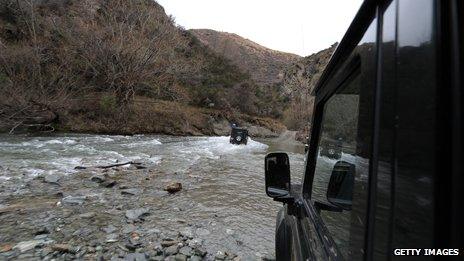
Tolkien film set tourism includes trips to Bush Creek - aka the Ford of Bruinen...
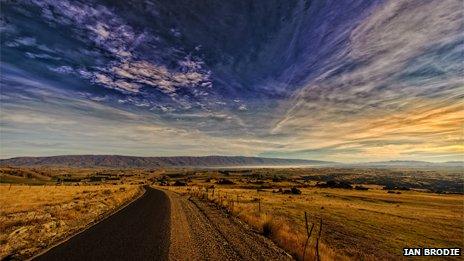
... and Middlemarch, where Orcs hunt the dwarf company in The Hobbit
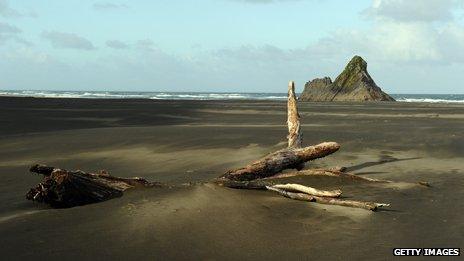
The beach where Holly Hunter and Anna Paquin came ashore in The Piano
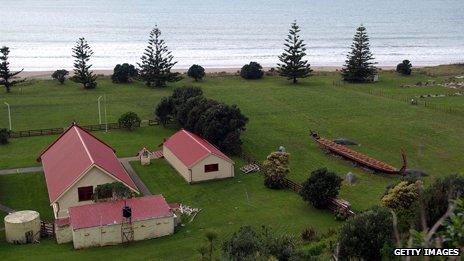
Whangara, where much of 2002's Whale Rider was filmed
"New Zealand can shift from one idea of the land to the other - pastoral to gothic, cultivated to wild," says Prof Laurence Simmons, head of media, film and television at the University of Auckland. "It's been used by filmmakers to fit a variety of global locations and historical periods, from small-town America in Peter Jackson's The Frighteners to 19th Century Japan, let alone Middle-earth and the landscape of Avatar."
Many of these films have helped to attract visitors to the country, just as the New Zealand Film Commission hoped would happen when it first started funding home-grown features in the 1970s.
In a survey conducted in the first quarter of 2013, external, one in 10 international arrivals said The Hobbit sparked their interest in New Zealand as a destination.
"We estimate that 47,000 visitors a year visit a film location," says Danielle Genty-Nott of Tourism New Zealand.
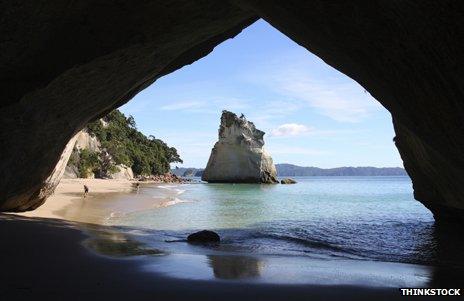
Narnia, aka a Coromandel beach
Such is the popularity of film location tourism, says Genty-Nott, that a regional tourist office asked Tourism New Zealand to stop using a still from The Chronicles of Narnia: Prince Caspian, in order to protect the beach depicted.
Too many visitors wanted to run through its natural stone arch, just as the Pevensie children did on their return to Narnia.
So is New Zealand the Meryl Streep or Daniel Day-Lewis of countries?
"Yes, with a bit of Anthony Hopkins put in," says photographer Ian Brodie, author of The Lord of the Rings Location Guidebook.
"The people at Weta Workshop [Peter Jackson's company] think the academy awards for Lord of the Rings should have gone to New Zealand."
The landscape of the country in which Anna Paquin, Sam Neill and Russell Crowe grew up is definitely a co-star, he says.
"The Sam Neill film Perfect Strangers involved a murder and an unruly West Coast beach played an integral part in setting the mood. I'd liken it to the big house in The Shining. But in New Zealand, rather than use a building, you use the landscape."
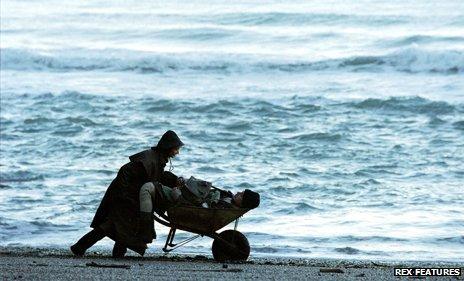
Murder on the beach in Perfect Strangers
And it has a personality, says Simmons. "There are no predators but there is an obsession with the germ of evil in this paradisical land. We are uncomfortable with the image of perfection and paradise, and so we are always looking for what might be wrong. The dark, gothic version of a menacing landscape is definitely one of its 'moods' and Top of the Lake has some of that."
Top of the Lake was broadcast on Saturday 17 August on BBC Two at 21:10 BST, or (in the UK) catch up with iPlayer
You can follow the Magazine on Twitter, external and on Facebook, external